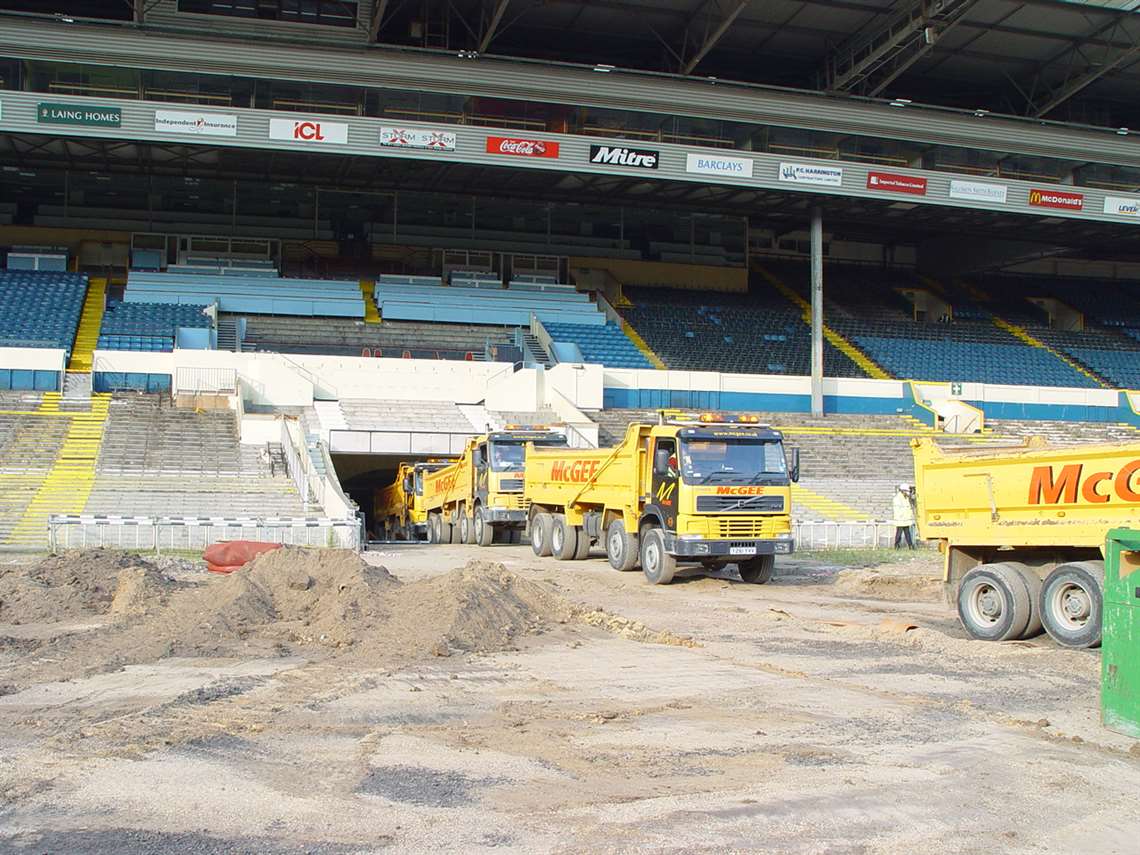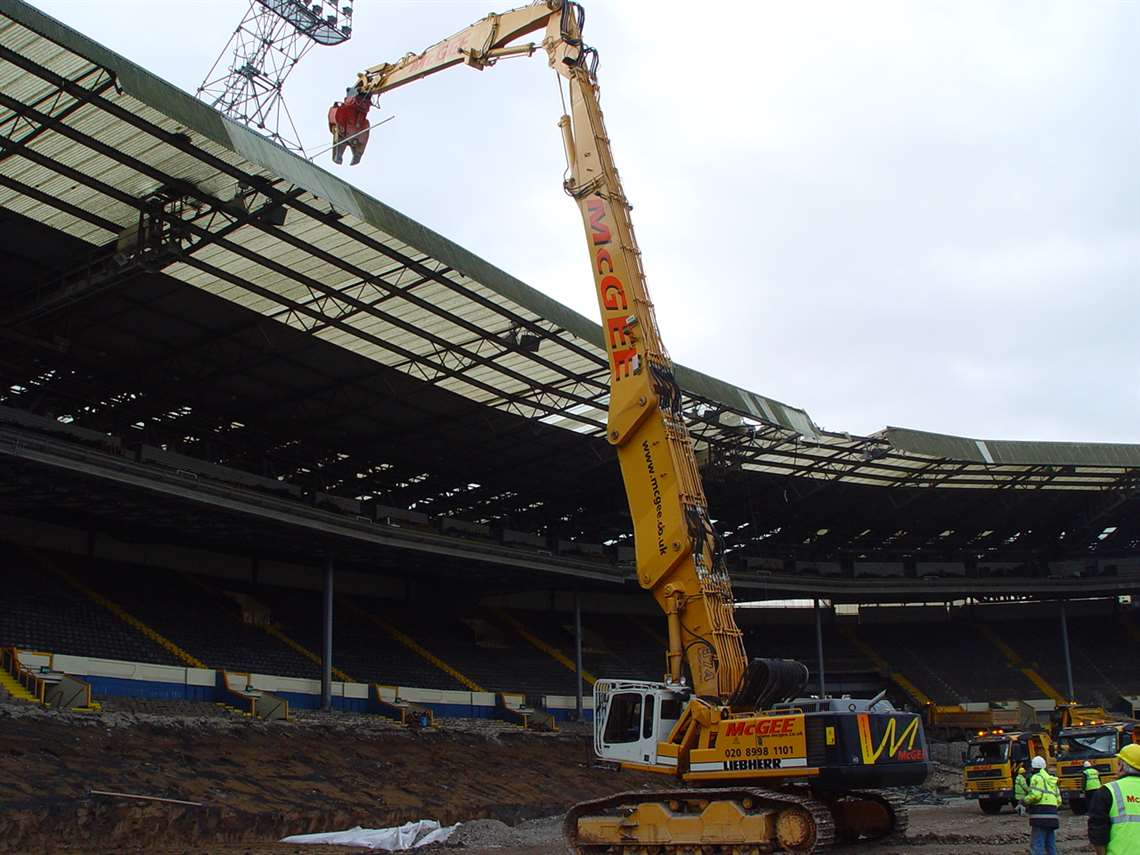Wembley memories for McGee as football comes home again
09 June 2021
The delayed Euro 2020 football competition finally kicks off this weekend – and the millions worldwide watching England’s Wembley Stadium host its first game on Sunday will no doubt include employees of British demolition contractor the McGee Group.
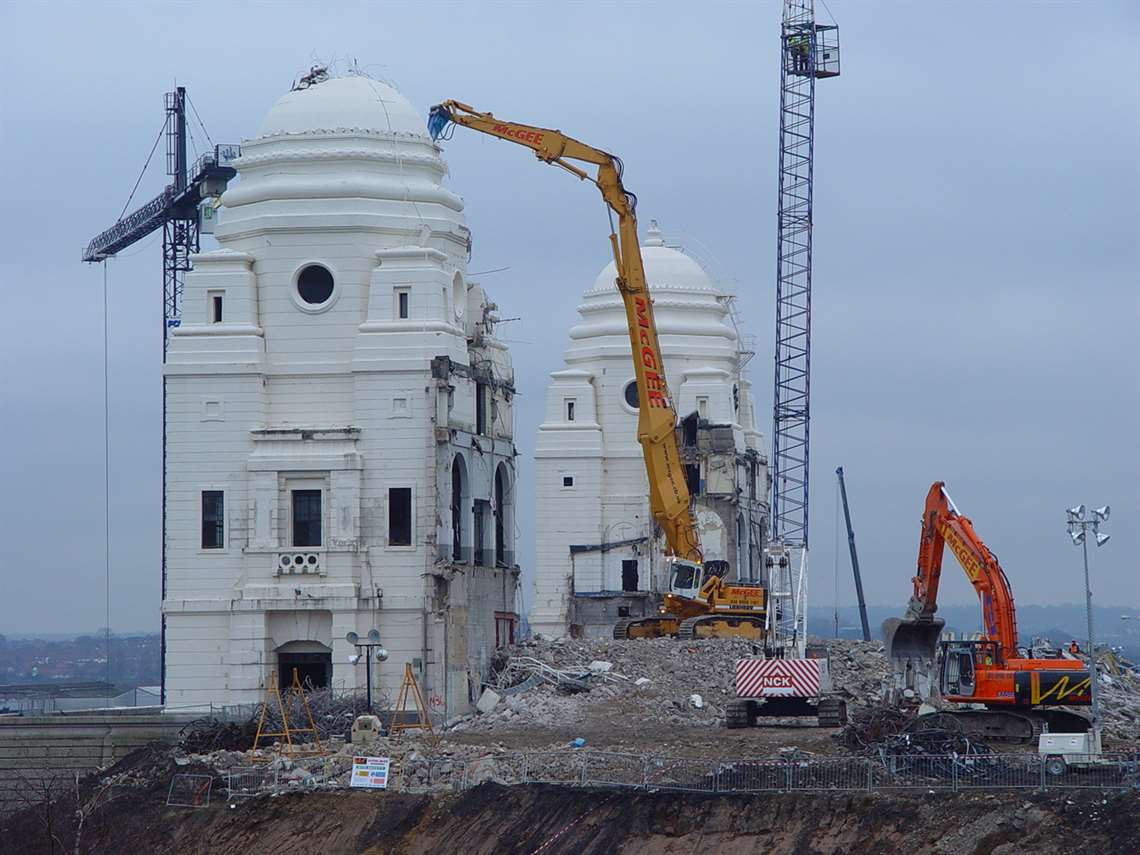 McGee’s work on the Wembley demolition project lasted from 2002 to 2004
McGee’s work on the Wembley demolition project lasted from 2002 to 2004
The iconic London venue will also stage the final of the competition next month, just as it did in the famous “Football Comes Home” tournament in England 25 years ago.
But the stadium itself looks radically different these days, with the old Wembley having been demolished early this century and rebuilt for its grand reopening in 2007.
And McGee, whose head office is in the same London suburb that the stadium takes its name from, was right there at the heart of the changeover, providing decontamination and civil engineering services as well as demolition.
The company told D&Ri: “We started in 2002 and we were on site until 2004 as we also did a lot of groundwork on the job following its demolition.
“The demolition of the stadium took around six months. It appeared to be a massive structure, but it was relatively easy and quick to demolish as it had good access for as much large plant as you wanted, which was the key to the project.
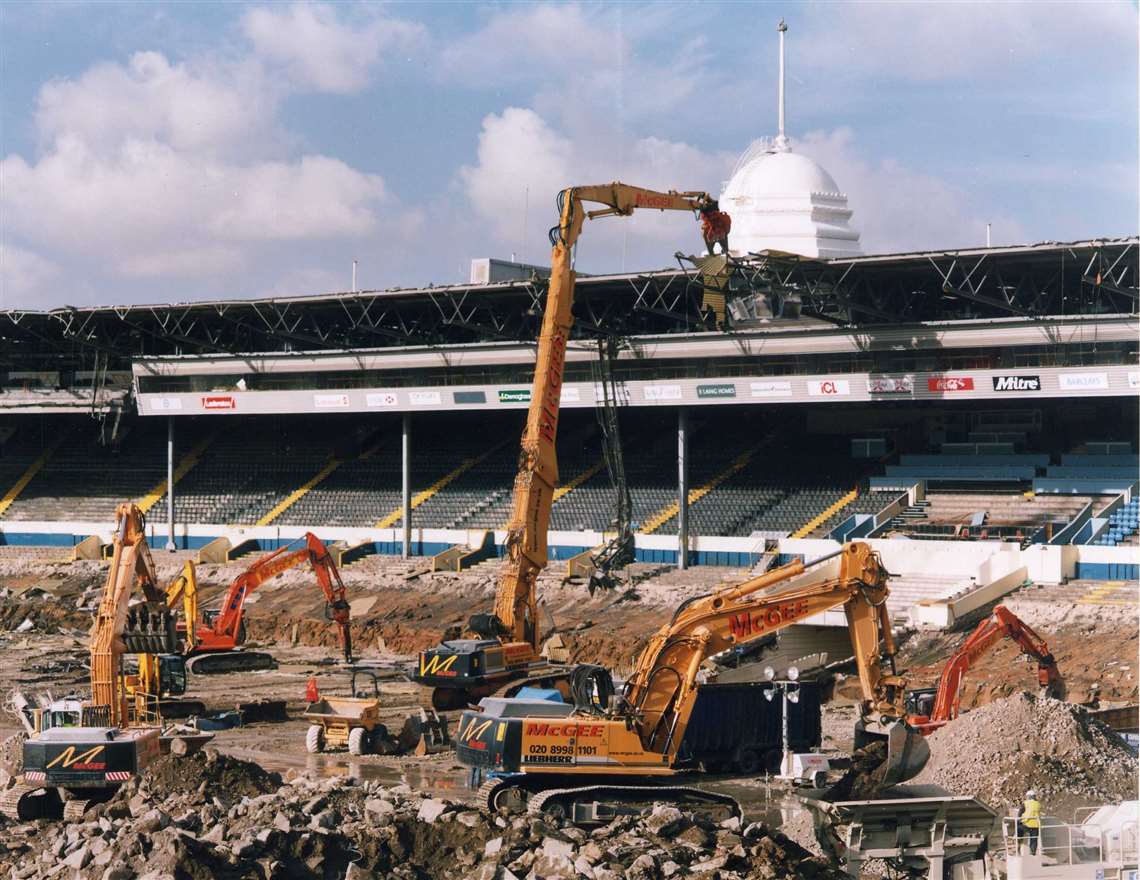 McGee’s investment included a long reach machine, which was thought to have cost around £1 million (US$1.4 million), specifically for the Wembley Stadium demolition project
McGee’s investment included a long reach machine, which was thought to have cost around £1 million (US$1.4 million), specifically for the Wembley Stadium demolition project
“The long reach machine used at Wembley was bought specifically for this project. I think it cost about £1 million (US$1.4 million) and was the largest long reach in the United Kingdom at the time.
“From soft strip, asbestos removal and temporary works to the demolition of the existing stadium, roof, foundations, pedways and all other associated buildings, including the famous twin towers, the scope of the works was extensive.”
The demolition also included removing the foundations left by Watkin’s Folly [the structure that occupied the site before the stadium opened in 1923].
“Where possible all demolition rubble was reprocessed on site and laid as pile mats, later forming parts of the foundations for the new stadium.”
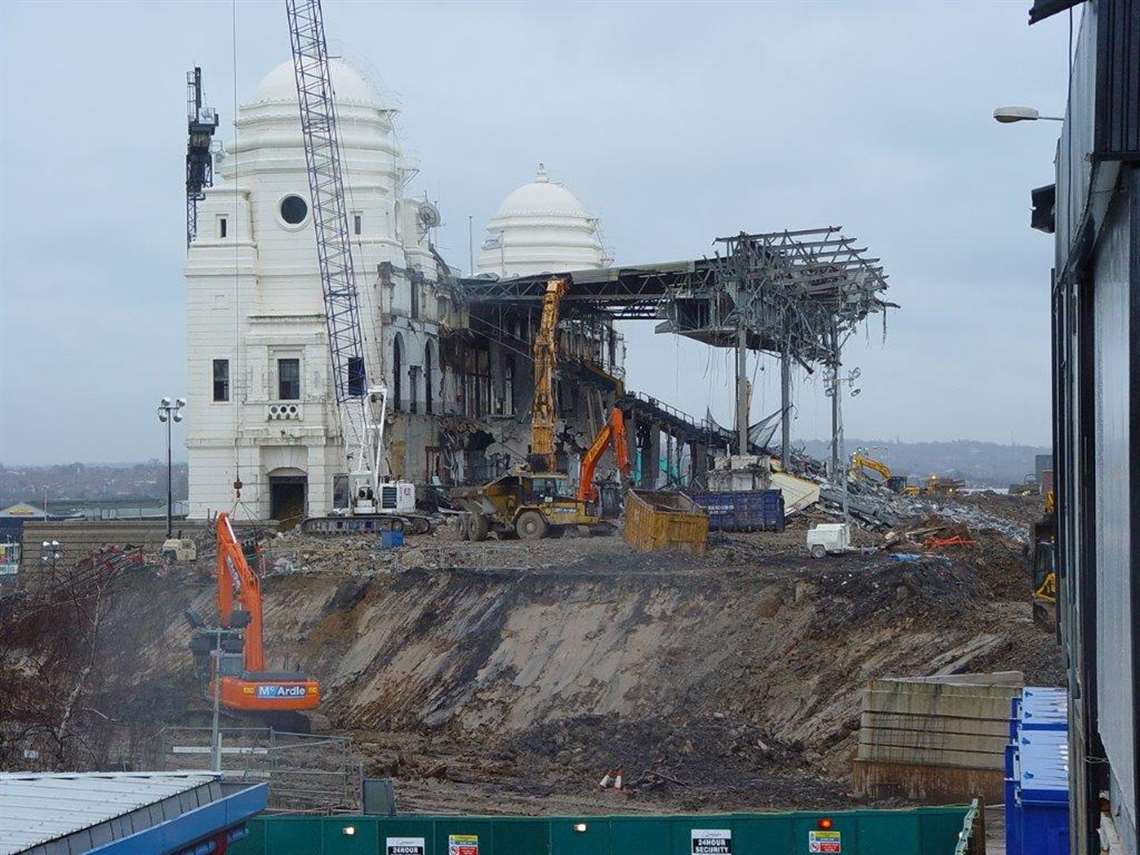 The north side of the stadium being taken down
The north side of the stadium being taken down
For those involved at the time, two parts of the job stand out almost 20 years later.
“There were about 40,000 red plastic seats that had to be dismantled by hand as the pigment in them was deemed to be contaminated and had to go to a hazardous facility.
“Despite this, the programme for the stadium demolition was fast tracked.
“Also, once the turf was laid on the new pitch, anyone who needed access across it on foot or worked adjacent to it had to go through a special induction on what to do and what not to do on and around the pitch.
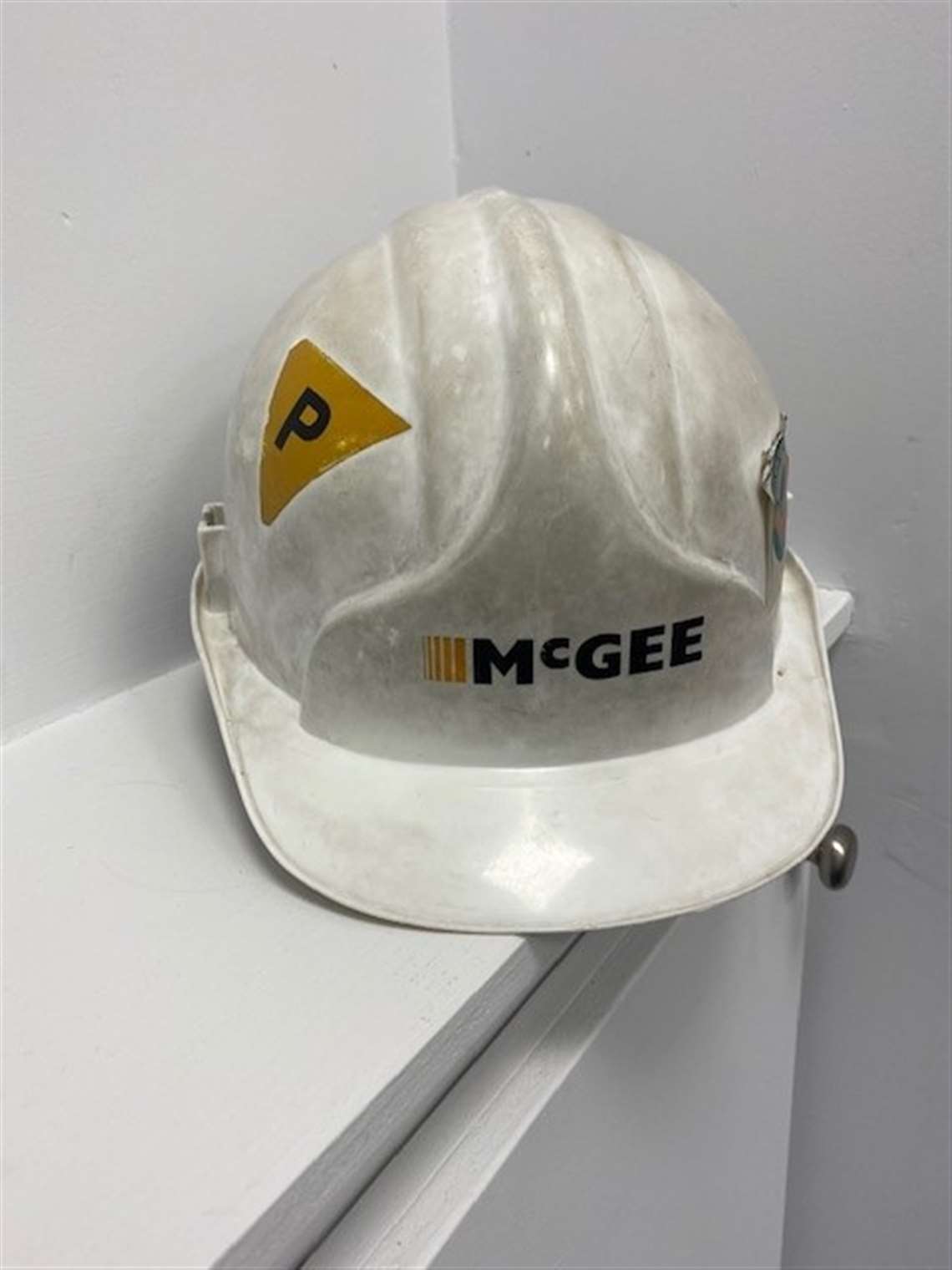
“Hard hats had a triangular ‘P’ sticker attached to them to signify that you had attended the induction, and supervisors would be aware that anyone on the pitch who did not have the sticker would be asked to get off!”
England’s played their last game at the old Wembley in October 2000, losing to old rivals Germany in a downbeat final chapter.
McGee, however, enjoyed a happier outcome. It handed the site back to client Wembley National Stadium Limited eight weeks early and on budget.
So, when England and Croatia get underway on Sunday, expect some of the company’s longer serving staff members to pause and think about the old stadium that it brought to the ground all those years ago.
Whether England team manager Gareth Southgate – who played in that last match before demolition – joins them is another question. But then he will probably have other things on his mind.
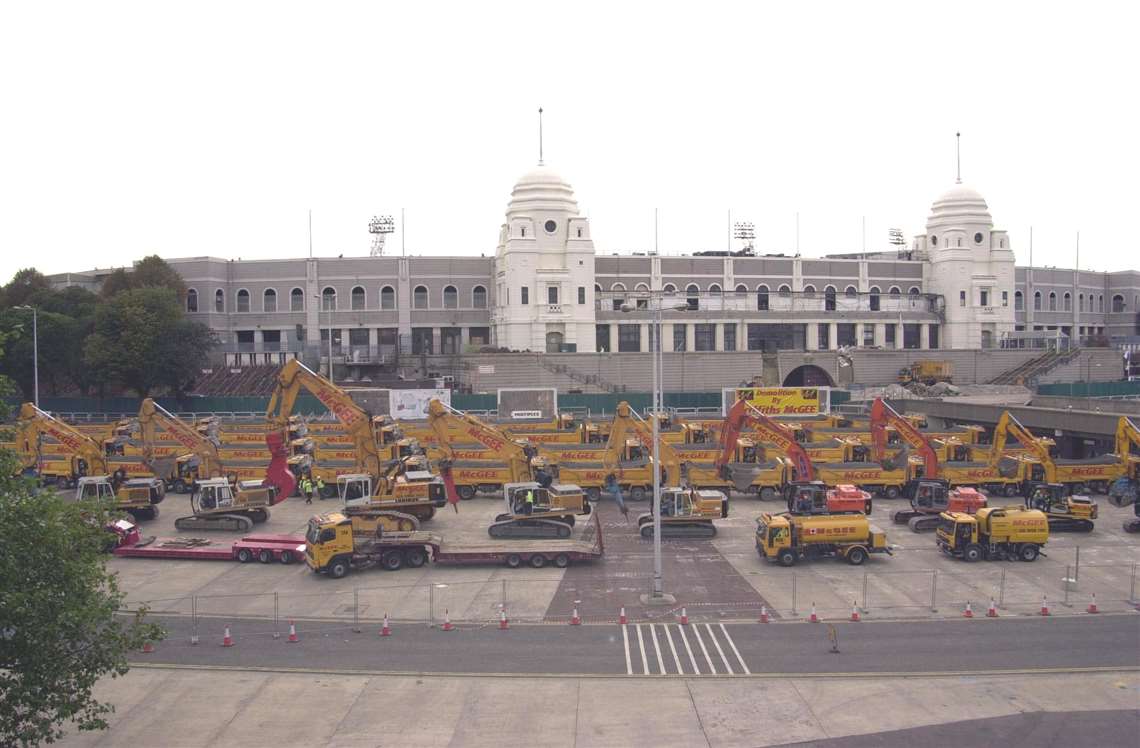 Demolishers assemble: McGee’s equipment stands at the ready outside Wembley Stadium
Demolishers assemble: McGee’s equipment stands at the ready outside Wembley Stadium
STAY CONNECTED



Receive the information you need when you need it through our world-leading magazines, newsletters and daily briefings.
CONNECT WITH THE TEAM









